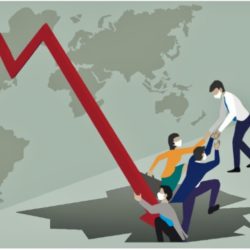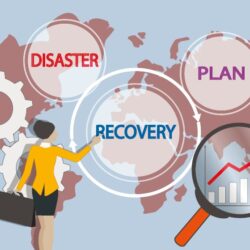Calling for a new pro-active supply chain risk management

In the face of today’s highly disruptive external environment, companies need to leave traditional and ineffective approaches to risk management behind and move towards a new pro-active approach. Stop chasing events and become risk-aware!
By Iris Heckmann and Thomas Ebel
As the last months have shown, uncertainty and stress on global supply chains are increasing at an ever-faster rate. Disruption is followed by disruption in an unprecedented way, causing shocks in supply as well as demand on many different levels. The important strategic questions are: How can we minimize our vulnerability to disruptions and effectively integrate risk in day-to-day supply chain decision-making in the strategical, tactical, and operational horizon? And how can we practically add risk and resilience to the key supply chain dimensions of service, cost, and capital?
In order to react to the new hyper-disruptive environment, companies need to consider changing perspective and especially avoid three common traps of traditional supply chain risk management.
Stop thinking in risk events – focus on impact
It is very important to acknowledge that we are structurally unable to forecast disruptive events. Who forecasted the Eyjafjallajökull eruption, the lockdowns at the start of the pandemic, or the developments in Ukraine? But still, companies often center their risk management around detecting and assessing potential risk events. Instead, companies should decouple their thinking from discrete events, and focus on the detection of the impacts on the supply chain.
Quantify vulnerabilities instead of over-engineering probabilities
Probabilities for risk events are very difficult to derive in a fact-based way: What is the probability of a factory fire? Of a port shutdown? Of a pandemic lockdown? Trying to get probabilities right can often become a time-consuming trap for supply chain risk management. In order to derive the right mitigation actions, it is much more relevant to define the right range of disruption profiles and give them a reasonable weighting compared to an undisrupted base case.
Do not focus on firefighting – be structurally prepared
In today’s environment where shock waves hit higher and higher, it is critical to not only stress the art of crisis management, but also the science of structural preparedness. Today many companies are swamped with external risk alerts. How to filter what is most important and relevant? How do we know what to do when? Without strong structures and prevention, short-term crisis management and firefighting may soon become futile.
Moving towards risk-aware supply chain decision-making
In order to address the strategic questions described at the beginning, we suggest a new approach, which can support the pro-active assessment of the supply chain and prepare the network for the unexpected. This approach is built on three principles:
- First, use a digital twin to model and stress-test supply disruptions on the network and create insights how to mitigate disruptions.
- Second, embed the insights into the most critical supply chain decisions, e.g., network design, S&OP, S&OE, logistics planning.
- Third, enhance the capabilities of your team to move from deterministic to uncertainty-driven decision-making.
Effectively bringing the tough choices of how to make the network and business more resilient to management will be the most valuable business contribution of supply chain leaders now and in the years to come.
SCM Webinar Wednesday September 14
Supply Chain Media and Camelot are organizing the webinar ”Tired of managing risks? Start incorporating risk into decision-making. Now!”, on Wednesday September 14, 2022 starting at 16:00 hrs CEST. Learn from our guest speakers Iris Heckmann and Thomas Ebel (both Camelot).
- Why traditional risk management fails to build resilient supply chains?
- How to start the journey towards E2E supply chain resilience?
- What does risk-aware decision-making practically look like? Insights from a customer use case.










